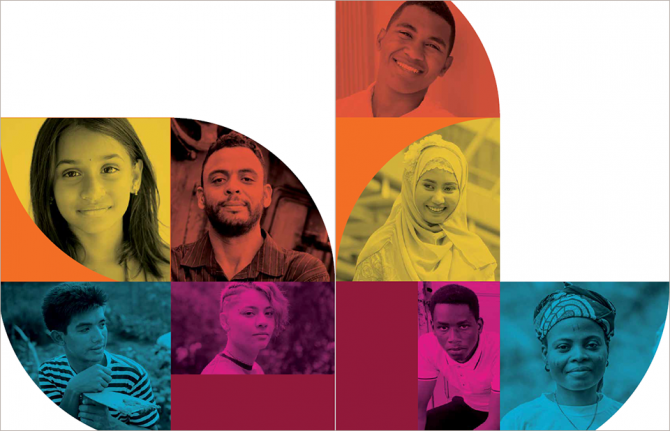

Press Release
Forty years on and new UNAIDS report gives evidence that we can end AIDS
03 June 2021 03 June 2021UNAIDS urges world leaders to adopt a bold political declaration on HIV at the United Nations General Assembly High-Level Meeting on AIDS, being held in New York and online next week, and to commit to achieving a new set of targets for 2025 to end AIDS by 2030
NEW YORK/GENEVA, 3 June 2021—Four decades after the first cases of AIDS were reported, new data from UNAIDS show that dozens of countries achieved or exceed the 2020 targets set by the United Nations General Assembly in 2016—evidence that the targets were not just aspirational but achievable.
The report shows that countries with progressive laws and policies and strong and inclusive health systems have had the best outcomes against HIV. In those countries, people living with and affected by HIV are more likely to have access to effective HIV services, including HIV testing, pre-exposure prophylaxis (medicine to prevent HIV), harm reduction, multimonth supplies of HIV treatment and consistent, quality follow-up and care.
“High-performing countries have provided paths for others to follow,” said Winnie Byanyima, the Executive Director of UNAIDS. “Their adequate funding, genuine community engagement, rights-based and multisectoral approaches and the use of scientific evidence to guide focused strategies have reversed their epidemics and saved lives. These elements are invaluable for pandemic preparedness and responses against HIV, COVID-19 and many other diseases.”
Globally, the report shows that the number of people on treatment has more than tripled since 2010. In 2020, 27.4 million of the 37.6 million people living with HIV were on treatment, up from just 7.8 million in 2010. The roll-out of affordable, quality treatment is estimated to have averted 16.2 million deaths since 2001.
Deaths have fallen in large part due to the roll-out of antiretroviral therapy. AIDS-related deaths have fallen by 43% since 2010, to 690 000 in 2020. Progress in reducing new HIV infections has also been made, but has been markedly slower—a 30% reduction since 2010, with 1.5 million people newly infected with the virus in 2020 compared to 2.1 million in 2010.
The report underscores that countries with punitive laws and that do not take a rights-based approach to health punish, ignore, stigmatize and leave key populations—which make up 62% of new HIV infections worldwide—on the margins and out of reach of HIV services. For example, almost 70 countries worldwide criminalize same-sex sexual relationships. Gay men and other men who have sex with men, sex workers, transgender people, people in prison and people who inject drugs are left with little or no access to health or social services, allowing HIV to spread among the most vulnerable in society.
Young women in sub-Saharan Africa also continue to be left behind. Six out of seven new HIV infections among adolescents aged 15–19 years in the region are among girls. AIDS-related illnesses remain the leading cause of death among women aged 15–49 years in sub-Saharan Africa.
COVID-19 has shown the fragility of the health and development gains made over the past decades and has exposed glaring inequalities. To get the world on track to end AIDS by 2030, the global AIDS community and UNAIDS have used an inequalities lens to develop an ambitious and achievable strategy with new targets to reach by 2025. Ending inequalities requires HIV responses that can reach the populations currently being left behind.
If reached, the targets will bring HIV services to 95% of the people who need them, reduce annual HIV infections to fewer than 370 000 and AIDS-related deaths to fewer than 250 000 by 2025. This will require an investment of US$ 29 billion a year by 2025. Each additional US$ 1 of investment in implementing the global AIDS strategy will bring a return of more than US$ 7 in health benefits.
UNAIDS urges the United Nations General Assembly to commit to the targets in a new political declaration on HIV at the fifth United Nations General Assembly High-Level Meeting on AIDS, taking place from 8 to 10 June 2021.
“The world cannot afford to underinvest in pandemic preparedness and responses,” said Ms Byanyima. “I strongly urge the United Nations General Assembly to seize the moment and commit to taking the actions needed to end AIDS.”
UNAIDS
The Joint United Nations Programme on HIV/AIDS (UNAIDS) leads and inspires the world to achieve its shared vision of zero new HIV infections, zero discrimination and zero AIDS-related deaths. UNAIDS unites the efforts of 11 UN organizations—UNHCR, UNICEF, WFP, UNDP, UNFPA, UNODC, UN Women, ILO, UNESCO, WHO and the World Bank—and works closely with global and national partners towards ending the AIDS epidemic by 2030 as part of the Sustainable Development Goals. Learn more at unaids.org and connect with us on Facebook, Twitter, Instagram and YouTube.
